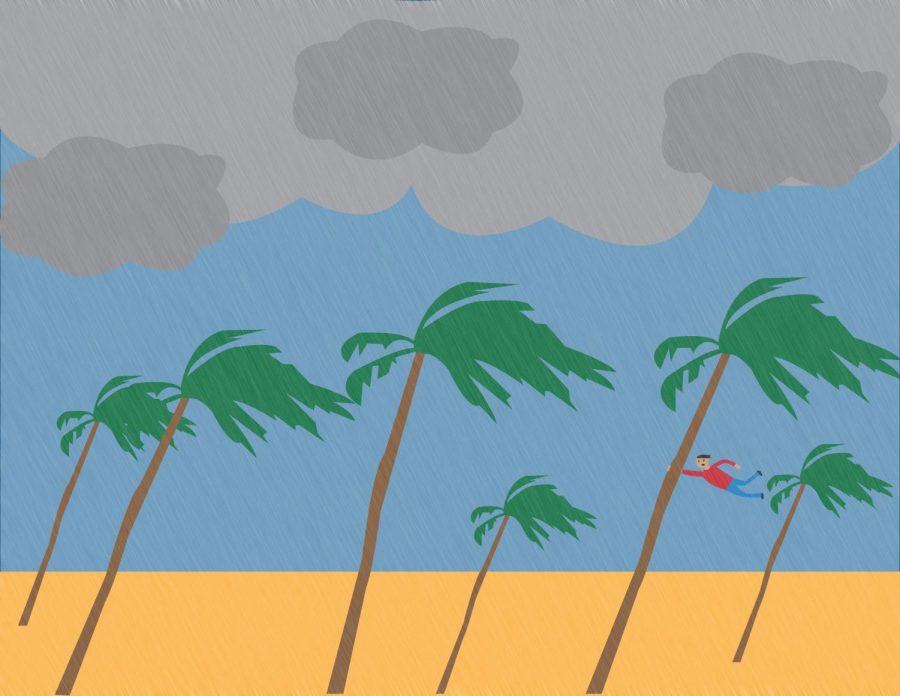New York as Seen through Rain
October 7, 2021
New York. The city that never sleeps. So many lives happening in one dot on the map. A
place so famous, standing in it feels surreal. Almost as if all its stories can be heard in the tousle
of leaves when wind drifts through Central Park, when bus tires run over puddles cumulated in
potholes, or in the sound of rain hitting the High Line Trail.
In late August, I spent five days gallivanting around New York City, and upon being
back, I recall my memory of the night that it rained like New York was trying to emulate Seattle.
The day had stayed consistently 90 degrees and blue skied, but it was starting to wind
down. In search of something warm to eat for dinner, my dad and I took hotel-supplied umbrellas
to account for a halfhearted drizzle and set off down Lexington Street. Night seemed eager to roll
in, as the light disappeared, the sky blackened, and raindrops came down fast and furiously. My
umbrella was being tested, and I knew my shoes were goners. I did not mind, however, because
the rain was giving the streets an unignorable excitement. It was comedic seeing what people
would do to avoid getting wet; a trio crouched under one shared jacket, some bolted like it was
the Olympic trials, one man sacrificed an untidy, hefty stack of papers and held it just barely
over his head. Strangely, this situation that typically allows complaining, seemed to unite people.
The high spirits were palpable. I found it fascinating to observe how people reacted to the
rapid weather change while walking down the street and transition from an invasively sunny
afternoon to a stormy evening within span of an hour. This experience left me to ponder how
New York, and the East Coast in general, change when it pours. If I noticed it, did others? When
I returned to the hotel room and flipped on the TV, the default news channel was projecting a
map of Hurricane Ida, which had only just begun to sweep the East. On another channel, a movie
called “A Rainy Day In New York” was playing. Perhaps, I am not the only one enthralled with
New York in its rainy state.
At approximately the time that Ida hit New York, I was taking off on a flight back to
Washington, but I continued to follow the dire weather situation. The intensity built, an article by
MIT Tech Review stated, “as the storm moved up the East Coast, New York City was hit
particularly hard. Over three inches of rain fell in Central Park within an hour, breaking a record
set just a week before.” I was interested in seeing what the New York Times would have to say
about their own city, and what I found was that the overarching tone was worry. “The dangers of
the city’s aging infrastructure and subways was that they are vulnerable to the violent weather”.
This could potentially add to Hurricane Ida’s death toll which had already risen to 46 people by
Sept 3rd
Junior Ashley Liz stated, “I think higher category hurricanes are very interesting, seeing
what happens.” Kiki Laguerre is a senior living in Chestertown, a neighborhood in New York.
She recalled the trance storms put her in as a kid, “I remember…always loving when big storms
hit because the power would go out and my mother would light a bunch of candles.” What
Laguerre notices when it rains in New York is that people have dampened moods “because it
ruins their plans for the day,” which makes sense, considering New York’s electric nature.
Laguerre spoke empathetically toward other people’s situations during Hurricane Ida, such as
when she said, “I know that Ida hit Louisiana really hard…a lot of homes and businesses were
destroyed.” Personally, Laguerre and her family were prepared for Ida due to previous
experience, but felt New York could have responded better, saying, “there’s always room for
improvement.” Jordan Spitz, a sophomore residing in Livingston, New Jersey and her family
have experienced two hurricanes. Specifically, during Ida, her “whole town flooded, and
multiple people got stuck in the roads.” Overall, during the hurricane there were feelings of fear
and anxiety, Spitz said, “New Jersey changed because people start to panic and get scared about
everything”. In response to New Jersey’s reaction, Spitz said, “I think New Jersey responded
well because everyone was taken care of.” Interestingly, she and Laguerre shared the same
thought because they both stated that responses to catastrophes can always be improved upon.
According to Spitz, “There is a transition period [after a hurricane]. Everyone is trying to fix the
damage, and everything is not 100% back to how it used to be.”
New York. A place that feels exciting even in a downpour. One where people can still
find ways to take care of each other amidst a hurricane. Somewhere absolutely like no other.




